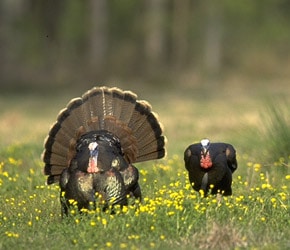
Page Contents
Long-range shooting
Shooting from different positions
Check your zero
What other skills do you need as a hunter?
You cannot call yourself a hunter unless you develop essential DIY skills (aka workmanship). Regardless of the name, the following skills will differentiate the greenhorns from the Nimrods, help you come back successful, and even stay alive in an emergency.

Use a compass
If you don’t know by now, the compass does just one thing: it points north. So unless you need to go north, there’s no sense to follow the needle. Even if you bring a handheld GPS unit or a smartphone with navigation apps, you should also pack a compass if they run out of juice. Learn how to use the compass before you go hunting.
Load your hunting backpack
Regardless of what you might think, knowing what to load in your backpack for hunting is an essential skill. You don’t want to carry an extra-heavy backpack filled with unnecessary items. On the other hand, you don’t want to miss something important for a survival scenario. Once you know what to pack, you also have to pack them to carry the loaded backpack on the rugged trails comfortably. Place the heavy items in the pack’s center and close to your spine and the lightweight things (sleeping bag, tent, and pillow) in the bottom. You can pack the extra clothing around the sides and ready-access gear (maps, lunches, rainwear) on the top. Store the optics and small things in the exterior pockets.
Start a fire when it’s wet
Not being able to start a fire with what you have on your hands isn’t the best scenario. Additionally, you don’t want to create a fire when it’s wet. Should you ever have to, you need to break away moist layers of dead wood until you see the dry chunks underneath. Pull dead branches off trees instead of collecting them from the wet ground. See that you have everything prepared before you attempt lighting your fire. Use the butane stove in your pack as a blowtorch for fast results.
A sharp hatchet is the best tool to use for a wide range of things, from busting an elk’s pelvis to building a shelter. You will need a file to fix a damaged head and a whetstone to do the honing. Keep the hatchet in place, spit on the stone, and work the whetstone in a circular motion. You should move along one side of the edge to the opposite corner. Go on both sides of the blade until the hatchet is sharp.
Quarter an elk
Should everything go by the plan, at the end of the day, you have a massive bull elk at your feet. You have to quarter it and pack it to take it back home. If you don’t have a horse to carry the meat, you will have to cut it into easy-to-carry pieces and make several trips back to your truck.
Begin at the front and lift the leg so that you cut through the “armpit.” Stay close to the ribs, slice, and see how the quarter peels up and off in short order. It will be tricky to cut the rear quarter. Start by cutting deep around the pelvis, hips, and backbone. Put one elk leg on your shoulder and follow the bone to slash between the legs. Cut the quarter until you see the ball joint. You need to gnaw through the exposed joint with the knife. Lift the meat and begin on the tenderloins and backstraps.
Tie a bowline
The most useful knot for a hunter is also the easiest to make. You have to make a small eye in the rope and leave enough tag end to create a loop around the thing you want to secure. Take the tag end through the eye from underneath and around the standing line; take it back through the eye. The knot won’t slip or jam and it’s excellent to use to secure loads to a post, tree, or any other lashing point.
Protect your rifle
With hunting, just like with other outdoor activities, you never know what Mother Nature throws at you. Since you have to be prepared, we remind you always to protect your rifle. Remove the stock and use synthetic oil to cover every metal component apart from the trigger. Use lighter fluid to flush the trigger and a sealer to treat raw wood in the inletting. Get a piece of electrical tape (it will not alter your shot) to cover the barrel.
Find a shooting rest
If you want to use a bench rest to shoot your rifle, you might have time to pile up packs. However, you don’t always have time for that and you have to get steady as quickly as possible. When you hunt, you always have to look for your game, trees, rocks, and everything else that could work as a rest when needed.
When you train at the range, you should also practice using vertical and horizontal objects to steady your rifle. Keep in mind not to rest the barrel against a solid object.

Shoot a Recurve
Since they’re machines, compound bows are precise and consistent. But it’s your body that has to become the machine to make sure that your recurve sticks through rib cages every single time. You will have to master a specific posture to become an excellent bow shooter. Slightly bend your knees, stop shoulders, and draw the bowstring to a consistent spot. Anchor with the fingertip in your mouth’s corner while the bow is canted away from your bow. Choose a target like a feather or tuft of hair, pull rearward with your fingers relaxed on the bowstring, and ride the arrow until you get that kill.
Manage a blister
Blisters don’t sound like medical emergencies when you’re back home, but they can turn into something severe when you’re in the middle of the woods. While afield, walking on the watery bubbles will make them burst and leave a painful open sore. You have to sterilize a needle in alcohol or flame and pierce a quarter inch away from the blister’s edge. Place the needle on the side and work the fluid down the tunnel with a delicate press. Use Neosporin and pad with moleskin before you continue your hunting.
Purify Water
You probably know by now that we cannot stay alive for many days without water. If you’re tempted to drink water from a mountain stream, you might want to think twice. It can contain Giardia which can give you the worst case of diarrhea. One safe method to drink water is to boil it for five minutes. Another approach is using purifying tablets or personal filter straws to drink clear, clean water. If you boil it, it may taste flat because it doesn’t have enough oxygen. Shake it up inside your bottle to give it some flavor.








